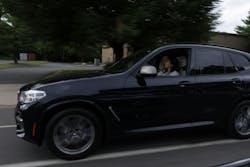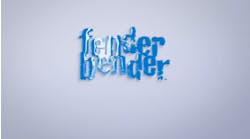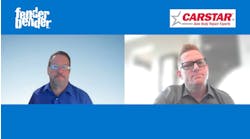“ADAS calibrations.” It’s a phrase in the auto collision repair Industry that has become a daily conversation, a daily thought, and a daily battle. And if you’re not doing them, it’s also a nagging voice in the back of your mind that might keep you up at night wondering about your liability exposure and what you can do to capture that revenue.
As we know, calibrations are now part of our repair process on many of the vehicles that come through our shop daily. Ensuring that ADAS calibrations are completed properly, and to the OE manufacturer’s specifications, gives you and your customer the peace of mind that the vehicle you are delivering and your customer is driving home is back in a “ready-to-crash” state. Today, not only do we need to worry about the number and location of spot welds, the locations and methods of our sectioning joints, or how we pulled a structural portion of the vehicle. We also need to make sure our ADAS sensors are looking in the proper direction, looking for the correct objects, and all with very specific specifications.
Let’s talk about dynamic calibrations. Typically, it’s a simpler process that can be completed in-house, which can lead to increased CSI and ultimately increased revenue by decreasing cycle time and the number of supplements. At the same time, you can deliver higher quality repairs, protect yourself from liability when completing and documenting properly (you are liable for the work that your sublets do), and keep that revenue stream in-house. So, if you are currently not completing those in your shop with your staff, let’s look at those possible reasons and discuss some thoughts about what you can do to overcome those obstacles.
Entering the ADAS-calibration business
One of the first questions asked is, “What is it going to take to get into the ADAS calibration business?” The answer is research, reaching out to your resources, fellow business owners, 20 Groups, auto body associations, or scanning partners like asTech, as examples. Typically, dynamic calibrations require a modest investment in the three major areas in dynamic calibrations, which are time, technology, and people. Most shops are currently pre- and post-repair-scanning their vehicles. Adding dynamic calibrations to your repair process prior to the post repair scan can be easily done by the staff that is currently doing the work and with the technology you are currently using.
As with any repair process on today’s vehicles, researching service information is king prior to any ADAS calibration work. Following service information ensures that you are following the process that the OE manufacturer states will bring the vehicle back to the “ready-to-crash” state. This may be as simple as cleaning the grille emblem or windshield prior to initiating the calibration with your scan tool or by your remote scanning partner prior to the drive. And it may extend to verifying that the sensor you are calibrating is level —or at a specified angle — before initiating the calibration prior to the drive cycle. Knowing the prerequisites and what are the requirements of the dynamic drive cycle is a huge part of the calibration process. Right there, we just knocked down the biggest barrier to entering the dynamic calibration space with your current technology, your current staff, and not adding too much additional time to the repair process of that vehicle. All of this in turn leads to where we started, which is increasing CSI and ultimately increased revenue by decreasing cycle time, having fewer supplements, delivering higher quality of repairs, protecting yourself from liability, and keeping the repair in-house.
Why service information research is needed
Let’s go back to service information and research and “when” we must complete a calibration. This is going to take some time, valuable time that your production manager or estimator/blueprinter does not have. Research is one of the most important steps in the process. Just like putting a lower rail in a unibody vehicle, do we just start pulling, cutting, and welding? No, we research the methodology that needs to be used, what type of steel we are working with, the limitations, and what the manufacturer requires to get that vehicle repaired and back to a “ready-to-crash state.” As ADAS has evolved, so has our repair information and ease of use. Finding this information is easy with a few keywords searched in your Service information provider’s site.
There is also other technology out there to assist in this. One useful tool is adasThink, which saves time in research of not only the procedure, but also the conditions in which the vehicle needs specific calibrations. The adasThink tool scrubs that vehicle’s estimate, compares every repair line to the OEM Service Information, and tells you as the shop owner, estimator, or technician which systems need to be calibrated and why, along with links that take you directly to the specific repair procedure that needs to be completed for that calibration. Now, we are saving time and making sure that the process is done correctly with the proper tools and prerequisites required.
What’s required before calibrations?
Now, let’s talk about proper setup of ADAS calibrations. As we do in replacing a rail or a quarter panel, it all starts with a proper “foundation.” If we did not properly get the vehicle dimensions corrected or load the suspension properly prior to welding on either of those, we will have problems with fit, finish, and how that vehicle will react in a subsequent collision. The same goes for ADAS calibrations. Your foundation sets you up for a proper, successful, “ready to crash” ADAS calibration. Just as in panel alignment, the vehicle’s alignment is critical, with the vehicle’s thrust angle being the most important part. Have you ever driven down the road and noticed a vehicle “dog-tracking” down the road and wondered “how far off is their steering wheel?” Think for a second that this vehicle has an ADAS system like a radar with automatic emergency braking. This vehicle’s sensor is now looking into the oncoming lane and when a car passes, boom, the brakes lock up because the sensor noticed something that was not supposed to be there. In that case, you would notice this right away. Now, if it was dog-tracking to the right, you may never know that the radar is not seeing what it is supposed to, as you don’t have oncoming traffic on that side. The issue is ultimately the alignment, and in the dynamic world, the sensor or the car will most likely not calibrate and tell you there is an “axis misalignment,” now bringing you to “When calibrations go bad” and problem-solving. It is very time-consuming, no matter your skill level. This all comes down to the foundation of proper repairs and proper setup to set you up for success.
What are your options for dynamic calibrations?
When it comes to initiating the dynamic calibrations, there are several options. You can use what you have if you are currently running your own pre- and post-repair scans, or you can use a technology partner like asTech. The one advantage of using a partner like this is that issues arise, you have a professional who works in calibrations day in and day out to help you diagnose the issue you may be having. This could be as simple as an open circuit, where the technician failed to plug in a sensor, all the way to weather or repair conditions that are affecting the vehicle. Having that resource to help through those situations is invaluable, as well as being able to keep that revenue in-house. Is a payee going to pay a dealership or a sublet bill when your technician forgot to plug in a sensor? If there is a bent bracket, now you get to bring it back from the dealer or sublet provider, change the bracket, and then take it back for the calibration, all while you lose time for transport and increase the cycle time of that vehicle. And that, will likely affect your CSI.
As you can see, entering into the dynamic ADAS calibration world will take some research, possibly some partnering, some very minor changes to your current process, and dedication. It ultimately leads to decreased cycle time, increased CSI, and best of all, increased gross profit. Choose the best use of your time, your technology, and your people. Whether partnering with a remote scanning/calibration technology provider like asTech — which will give you the tools you need to create an efficient process — or through what you currently have in-house, dynamic calibrations are a great way to start and enter the world of ADAS calibrations.



